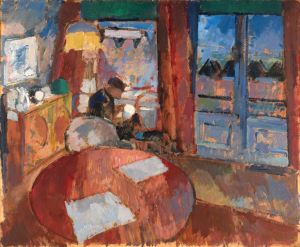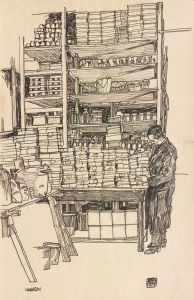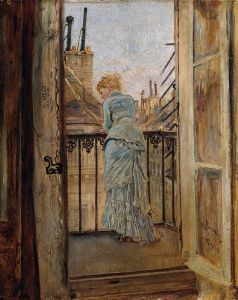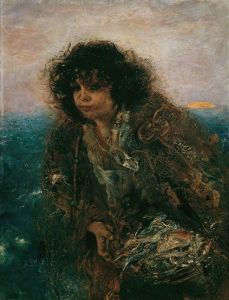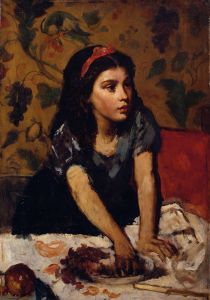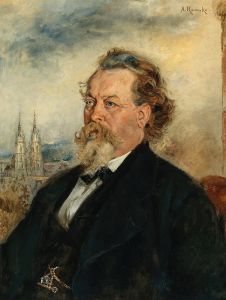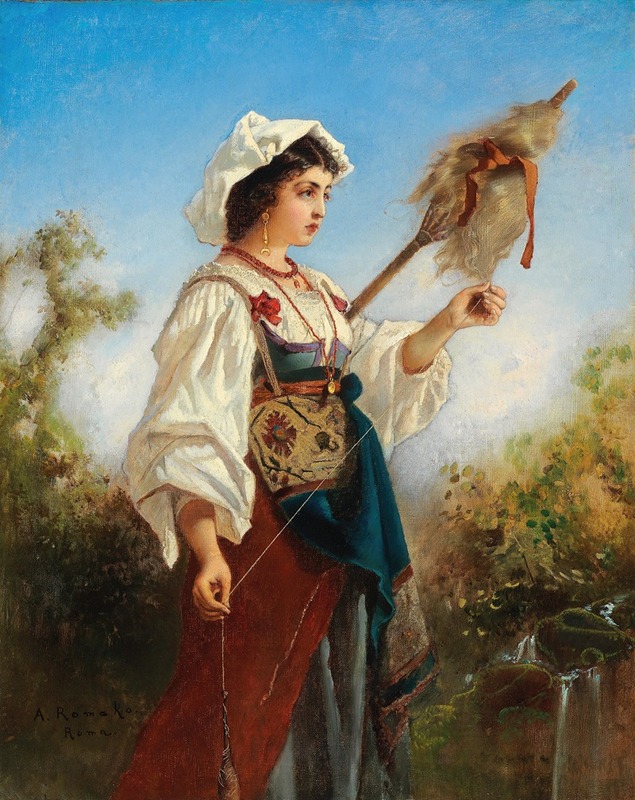
Römische Spinnerin
A hand-painted replica of Anton Romako’s masterpiece Römische Spinnerin, meticulously crafted by professional artists to capture the true essence of the original. Each piece is created with museum-quality canvas and rare mineral pigments, carefully painted by experienced artists with delicate brushstrokes and rich, layered colors to perfectly recreate the texture of the original artwork. Unlike machine-printed reproductions, this hand-painted version brings the painting to life, infused with the artist’s emotions and skill in every stroke. Whether for personal collection or home decoration, it instantly elevates the artistic atmosphere of any space.
Anton Romako's painting Römische Spinnerin (English: Roman Spinner) is a notable work by the Austrian artist, created in the 19th century. Romako, known for his distinctive style that bridged academic traditions and early modernist tendencies, painted this piece during his time in Italy, where he was influenced by the local culture and everyday life.
The painting depicts a Roman woman engaged in the act of spinning thread, a traditional and symbolic activity associated with domestic life and industriousness. The subject is seated, holding a spindle and distaff, tools historically used for spinning fibers into thread. Her posture and expression convey a sense of quiet concentration, reflecting Romako's interest in capturing intimate, everyday moments. The setting is simple, with a focus on the figure, allowing the viewer to appreciate the details of her clothing and the tools of her craft.
Romako's use of light and color in Römische Spinnerin demonstrates his skill in creating depth and texture. The warm tones and soft lighting evoke a serene atmosphere, while the careful rendering of the figure showcases his ability to combine realism with a subtle emotional undertone. This approach aligns with Romako's broader artistic style, which often emphasized psychological depth and individuality in his subjects.
The painting is an example of Romako's engagement with themes of traditional life and his interest in portraying the dignity of ordinary people. It also reflects the influence of his time in Italy, where he was inspired by the landscapes, culture, and people he encountered. While Romako's work was not widely appreciated during his lifetime, his paintings, including Römische Spinnerin, have since been recognized for their unique contribution to 19th-century art.
Today, Römische Spinnerin is considered an important piece within Romako's oeuvre, illustrating his ability to blend technical skill with a nuanced portrayal of human experience. The painting is held in a public or private collection, though specific details about its current location or exhibition history are not widely documented.






